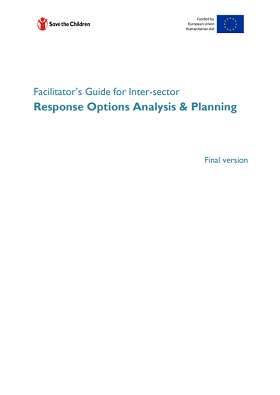Response Options Analysis Planning Guide
The inter-sector Response Options Analysis and Planning (ROAP) is a structured decision-making process, which draws from the information generated through a multitude of needs and operational environment assessments. The ROAP gives way to the selection of the most appropriate, operationally feasible and cost-efficient response options to achieve sector and inter-sector objectives for specific target groups and geographic areas, allowing choice among in-kind transfers, direct service delivery, vouchers, cash transfers, and combinations of those.
The Facilitator’s Guide has been piloted in Borno (Nigeria) and in Fafan zone (Somali region, Ethiopia) and improved iteratively after each test.
What does the ROAP have that you won’t find in other methodologies?
• It is based on holistic, people-centred approaches that span across sectors and consider people’s perceptions, priorities, ways of coping, and assistance preferences.
• It introduces the concepts of inter-sector needs profile and inter-sector causal analysis, and how to use these to articulate better integrated and holistic response packages, as opposed to siloed plans.
• It introduces the concept of basic needs basket, and how to define the BN basket based on both households’ perspective and sector experts’ opinions, and acknowledging that needs have different frequencies and timings, and units of analysis (individual, household, community).
You can download the reports of the ROAP pilot Nigeria and the ROAP pilot Ethiopia.



